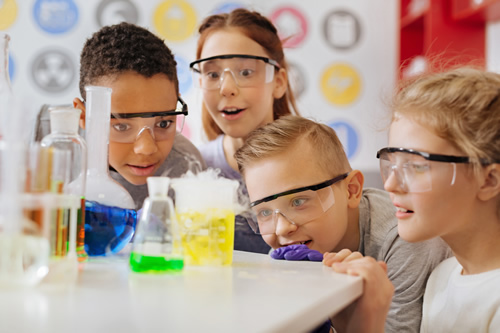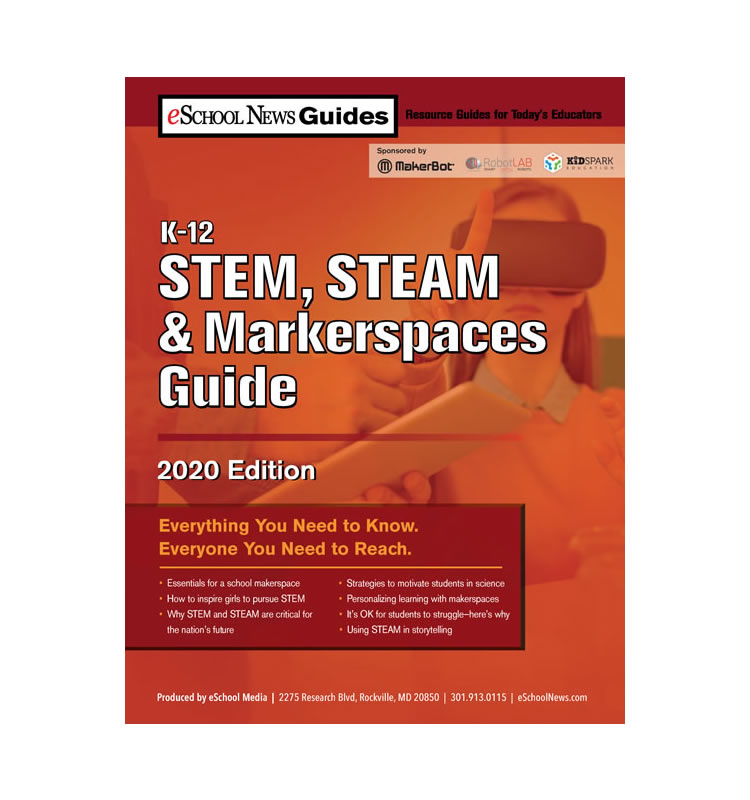A Challenge-Based Learning model pioneered by Apple is now helping teachers engage middle school students in deep learning through projects that combine developing questions, investigating scientific phenomena, and solving problems in their classrooms, schools, and communities.
In a recent edWebinar, Anthony Baker, project director for Digital Promise, which has further developed and researched the Challenge-Based Learning model, explains that this approach enables students to make meaningful connections to their science curriculum while also answering the age-old student question: “Why do I need to learn this?”
Related content: How we built an immersive learning environment
Recent projects implemented successfully at the Middletown Middle School in Ohio include the engineering/design challenge of creating throwing devices to help students with disabilities participate in the Special Olympics, and then working with those students to explain and test the devices.
Related Content:
eSchool News STEM, STEAM, & Makerspaces Guide
The eSchool News STEM, STEAM, & Makerspaces Guide is here! It features strategies to help you integrate STEM, STEAM, and makerspace education into classrooms, and it offers a look at how these tools engage students and give them valuable skills. A new eSchool News Guide will launch each month–don’t miss a single one!
The Challenge-Based Learning process and standards alignment
Three key steps in the Challenge-Based Learning process are engaging students in thinking about key concepts and related questions, investigating the questions to solve problems and document the results, and then acting on the results in their classroom, school, or community.
These steps are closely aligned with the Next-Generation Science Standards (NGSS), which require:
• Explaining phenomena or designing solutions
• Using a three-dimensional approach that combines science and engineering practices, disciplinary core ideas, and cross-cutting concepts
• Integrating the three-dimensional approach with instruction and assessment
To make the process effective, teachers need to organize the project around a scientific phenomenon and a problem to be solved. Students should have a context in which to make the project personally meaningful, and then have the space and time needed to investigate ideas that matter to them, using the NGSS practices.
Using Challenge-Based Learning in the classroom
For 8th grade science teacher Katie Leist in Middletown, OH, the first challenge with Challenge-Based Learning was “how do we fit it all in” with everything else that needs to be accomplished during the school year. She found that a collaborative approach, which included working with other teachers and students, and having students create their own templates for parts of the project, resulted in her being able to use a Special Olympics/throwing challenge in all six of her science classes, which have a total of 142 students.
Katie found that a “hook” to engage students is important, and in the Special Olympics/throwing challenge it was a video from a special education teacher requesting help for students who throw softballs during the Special Olympics. Katie’s students wrote their own questions, which were then organized into categories on a question board, and the students worked together to propose answers that were documented on posters. A key piece of learning for one student was that “I can’t Google this question…it’s not ‘Googleable,’” so Katie and the student discussed finding other ways to do the research instead.
After watching a video of the students with disabilities throwing softballs, students got into what they called the “fun phase”—designing solutions and creating prototypes. Initial devices were created using materials and tools such as popsicle sticks and glue guns, and then the creators had a trial session with users to see how the devices would work. This led to another important lesson: the creators had to explain and document how their creations should be used. Finally, a number of Katie’s students attended and helped at the local Special Olympics.
Emi Iwatani, Ph.D., a Digital Promise researcher, has found that the benefits of Challenge-Based Learning include helping students “learn how to learn” and develop independent ideas, while doing something real and having a positive impact. This approach can complement teachers’ instruction, either as a project at the beginning or end of a unit of study, or as an activity that alternates with regular instruction during a unit.
The Challenge-Based Learning model is now being applied to a wide range of scientific topics and proving to be an effective way to engage students in creative and impactful learning.
About the presenters
Anthony Baker works on learning experience initiatives involving the Next Generation Science Standards at Digital Promise, always looking for opportunities to increase equity and student choice in science instruction. Prior to joining Digital Promise, he worked as a high school science teacher, curriculum consultant and science coordinator for the State of Illinois.
Emi Iwatani is a learning sciences researcher at Digital Promise. As an education researcher, she studies K-12 learning initiatives related to deeper learning, student-centered learning, science and computational thinking, and learning technologies, paying particular attention to cultural responsiveness. Her eclectic background includes teaching project-based science, educational programming for at-risk youth, and doctoral work in philosophy of science and educational research methodology.
Katie Leist is going into her 4th year teaching 8th grade Science. Immediately following undergrad at Ohio State University, Katie received her Master’s Degree in Middle Childhood Education from Ohio State University in 2016. The past 3 years, Katie has worked at Middletown Middle School in Middletown, OH. She enjoys the wide array of science material 8th grade Science covers in Ohio and her favorite topic to teach is heredity and genetics. Katie recently accepted a new position at another school in the Cincinnati area called Loveland Middle School and will begin this position in the 2019-2020 school year.
About the host
At Digital Promise, Sierra Noakes leads collaborative, research-based projects driven by authentic needs. By co-designing systemic improvements to the edtech marketplace with key stakeholders, such as education leaders and educators, Sierra hopes to infuse research into edtech product design and help educators make edtech decisions based on classroom needs. Prior to joining Digital Promise, Sierra was an educator and the curriculum coordinator for the Brooklyn Autism Center and received her M.Ed. from the Harvard Graduate School of Education.
Research and Evidence in Edtech is a free professional learning community on edWeb.net that brings together researchers, educators, and product developers to share best practices related to edtech research and evaluation.
This edWeb broadcast was sponsored by Digital Promise. The recording of the edWebinar can be viewed by anyone here.
- 5 obstacles AI can help schools overcome - April 16, 2024
- Guidance counselors could help female high schoolers erase the STEM gender gap - April 16, 2024
- How video coaching inspires teacher self-reflection - April 15, 2024


